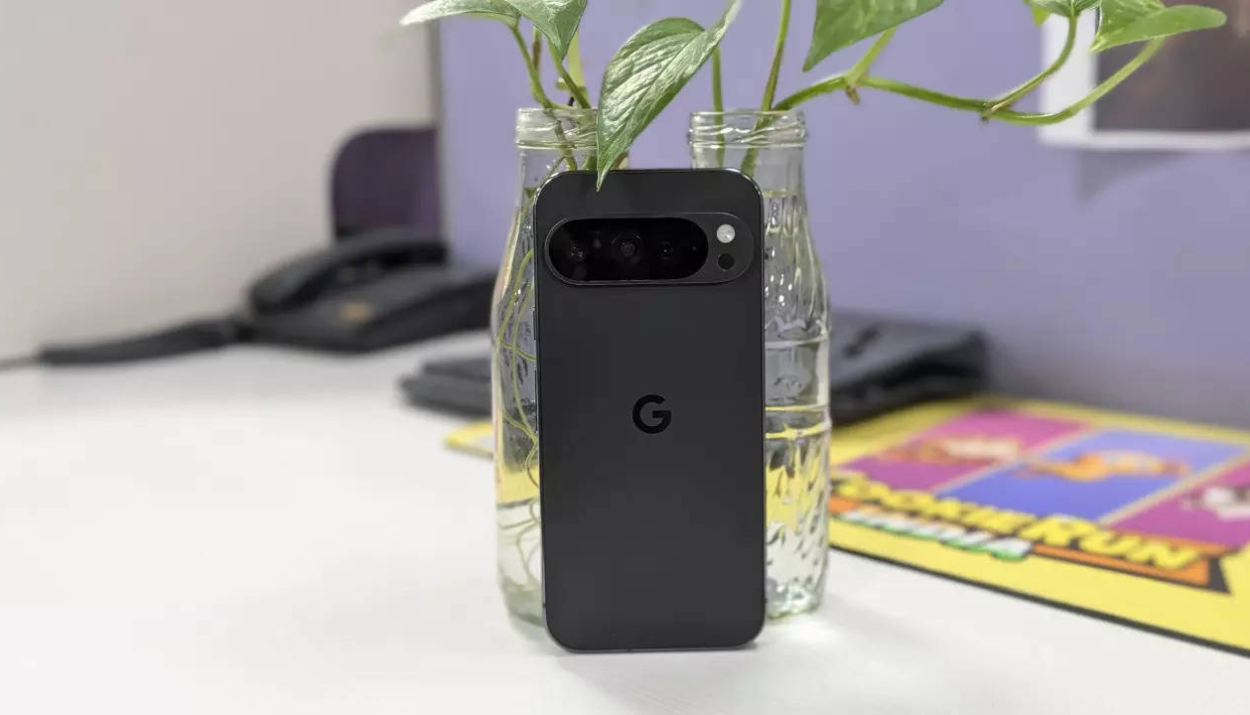The Google Pixel 9a, launched in April 2025, has solidified its place as a standout in the mid-range smartphone market, offering a blend of affordability and cutting-edge features. Known for delivering near-flagship experiences, the Pixel A-series continues to evolve, and the Pixel 9a takes a bold leap with its redesigned camera module. Departing from the iconic camera bar introduced with the Pixel 6 in 2021, the Pixel 9a sports a sleek, pill-shaped camera bump that has sparked both curiosity and debate. On April 11, 2025, 9to5Google published a detailed article outlining Google’s design process, revealing the alternative designs considered and the reasoning behind the final choice. This glimpse into Google’s creative journey underscores a meticulous approach to aesthetics, functionality, and durability.
The Pixel 9a Camera Design: A New Direction
The Pixel 9a’s rear camera design marks a significant shift from the elevated, visor-like camera bar seen on flagship models like the Pixel 9 and 9 Pro. Instead, it features a minimally domed, pill-shaped camera module that blends seamlessly into the phone’s flat back panel. This departure is both visually understated and functionally thoughtful, setting the Pixel 9a apart from its predecessors.
Per 9to5Google’s report, Google’s design team evaluated numerous configurations before settling on this design. The process prioritized not only aesthetics but also practical considerations like drop resistance and user comfort. Google shared a low-resolution image of alternative designs, offering insight into the creative decisions that shaped the Pixel 9a.
Alternative Designs Explored
One concept was a camera bump spanning nearly the width of the device, reminiscent of the Pixel 9’s camera bar but flatter. This would have maintained a visual link to the flagship lineup, appealing to fans of the camera bar’s bold style while adapting it for the mid-range market.
Another option was a vertical pill-shaped bump, potentially drawing parallels to the camera layouts of recent iPhone models or older Android devices like the Samsung Galaxy S21. A vertical design might have offered a compact footprint, optimizing space or enhancing ergonomics. Ultimately, Google chose the horizontal pill shape for its minimalist integration.
Other configurations—perhaps circular clusters like the OnePlus 12 or asymmetrical layouts—were likely considered, though details remain limited. The focus on horizontal and vertical pill shapes reflects Google’s aim to balance innovation with familiarity.
The Final Choice: Why the Pill Shape?
The chosen horizontal, minimally domed pill shape is a masterclass in subtlety. Unlike the protruding camera bars of past Pixels, this module sits nearly flush with the back, complementing the Pixel 9a’s flat design. As 9to5Google explains, this flatness emerged from improvements like better thermal management and a larger battery. Recognizing the potential for a sleek, symmetrical aesthetic, Google refined the camera module to enhance this look.
Practically, the design reduces wobble on flat surfaces, minimizes lens wear, and prevents snagging on pockets or bags. It’s a user-focused choice, as noted in durability discussions by Android Central.
The Significance of Moving Away from the Camera Bar
Since its debut with the Pixel 6, the camera bar has been a visual and functional cornerstone of Pixel design, symbolizing Google’s photography prowess. Its absence on the Pixel 9a carries weight, raising questions about brand identity and design direction.
A Shift in Pixel Identity
The camera bar elevated Pixel design from the generic backs of models like the Pixel 5 to a premium, recognizable aesthetic, as highlighted by TechCrunch. Removing it risks diluting this identity but also allows the A-series to forge its own path.
This could signal a deliberate differentiation strategy. While the Pixel 9 and 9 Pro retain the camera bar as a premium hallmark, the Pixel 9a’s minimalist design establishes a distinct personality, potentially strengthening its market presence, as suggested by Forbes.
Minimalism in Smartphone Design
The Pixel 9a taps into a minimalist trend seen in devices like the Samsung Galaxy S24 and iPhone 16. As smartphones prioritize seamless integration, flush designs are gaining traction. The Pixel 9a’s pill-shaped module aligns with this, offering a cohesive look and improved ergonomics, as praised by Digital Trends.
Technical Brilliance: The Pixel 9a Camera System
The Pixel 9a’s camera system exemplifies Google’s leadership in computational photography, narrowing the gap between mid-range and flagship performance with robust hardware and advanced software.
Hardware Specifications
The rear cameras include:
- 48MP Wide-Angle Main Sensor: A step down from the 64MP sensor on the Pixel 8a, but powerful, supporting 8x Super Res Zoom for detailed distant shots, as noted by CNET.
- 13MP Ultrawide Sensor: Suitable for expansive shots, though less sharp than the main sensor.
A 13MP selfie camera enhances self-portraits, while Macro Focus, a first for the A-series, enables detailed close-ups, adding creative versatility, as covered by Android Police.
AI-Powered Features
Google’s software elevates the Pixel 9a with flagship features:
- Magic Editor: Offers precise photo edits, from lighting tweaks to object removal, as seen in the Pixel 9 series.
- Best Take: Blends frames for perfect group shots.
- Add Me: Inserts the photographer into photos post-capture, lauded by TechRadar.
These tools make premium photography accessible, positioning the Pixel 9a as a top choice for diverse users.
Performance and Comparisons
Early reviews, like those from The Verge, praise the Pixel 9a’s performance in bright conditions, with vibrant colors and strong dynamic range. Night Sight ensures solid low-light shots, though it trails the Pixel 9 Pro’s optics. The ultrawide lens is functional but lacks the main sensor’s clarity, a typical mid-range trade-off.
Compared to the Pixel 8a, the 48MP sensor is a downgrade from 64MP, but software optimizations and Macro Focus compensate, making the Pixel 9a a refined successor.
User Reactions: Love It or Leave It?
The Pixel 9a’s design has elicited mixed reactions. Minimalism fans, as seen in X posts, appreciate its flush look, which reduces wobble and lens wear, as noted by Engadget. However, some mourn the camera bar’s absence, feeling it strips away Pixel’s soul, a sentiment echoed on Reddit. Functionally, the design excels in ergonomics and durability, aligning with Google’s practical focus.
Top FAQs About the Pixel 9a Camera Design
To address common curiosities, here are answers to the top frequently asked questions about the Pixel 9a’s camera design, based on insights from 9to5Google and broader discussions:
1. Why did Google abandon the camera bar for the Pixel 9a?
Google opted for a pill-shaped camera module to achieve a flatter, more integrated design, driven by improvements like better thermal management and a larger battery. This shift, as reported by 9to5Google, prioritizes minimalism and practicality, reducing wobble and lens exposure while distinguishing the A-series from flagships.
2. How does the new camera design affect durability?
The flush, pill-shaped module enhances durability by minimizing protrusion, reducing the risk of lens scratches or damage during drops. Google’s design process, per Android Central, emphasized drop resistance, making the Pixel 9a more resilient for daily use.
3. Does the Pixel 9a’s camera perform as well as the Pixel 8a’s?
While the Pixel 9a’s 48MP main sensor is a step down from the Pixel 8a’s 64MP, software enhancements like Magic Editor and Macro Focus maintain comparable performance. Reviews from The Verge suggest excellent results in bright conditions, with Night Sight rivaling its predecessor.
4. What is Macro Focus, and how does it work on the Pixel 9a?
Macro Focus, a new A-series feature, allows close-up photography with fine detail, ideal for subjects like flowers or textures. As explained by Android Police, it leverages the 48MP sensor and software to capture sharp images at close range, enhancing creative options.
5. Will the pill-shaped camera design appear on future Pixels?
It’s unclear if the pill-shaped module will become a staple, but it could define the A-series or influence flagships like the Pixel 10. BGR notes Google often tests designs in mid-range models, suggesting potential broader adoption.
6. Is the new design more ergonomic than the camera bar?
Yes, the flush design improves ergonomics by eliminating protruding edges, offering a smoother grip and better balance. Digital Trends highlights its comfortable hand feel, ideal for prolonged use.
7. How does the Pixel 9a’s camera compare to competitors like the iPhone 16 or Galaxy S24?
The Pixel 9a’s 48MP sensor and AI features compete well with the iPhone 16 and Galaxy S24, especially in software-driven tasks like low-light photography and editing. However, per TechRadar, competitors may edge out in ultrawide or zoom performance due to higher-end hardware.
Looking Ahead: What the Pixel 9a Means for the Future
The Pixel 9a’s design prompts speculation about Google’s plans. Here are potential directions:
A New A-Series Identity
The pill-shaped module could become an A-series signature, distinguishing it from flagships while maintaining Pixel quality, similar to Samsung’s Galaxy A-series.
Influencing Flagships
If well-received, the minimalist design might shape future flagships, potentially leading to flatter camera modules in the Pixel 10, as speculated by BGR.
Industry Trends
The Pixel 9a aligns with minimalist designs like the Nothing Phone (2a), potentially influencing competitors to adopt sleeker camera modules, as predicted by ZDNet.
Conclusion: A Bold Step Forward
The Google Pixel 9a’s camera design is a defining moment for the A-series. Its pill-shaped module balances form and function, delivering a sleek look, practical benefits, and a camera system that rivals premium devices. With a 48MP sensor, Macro Focus, and AI tools like Magic Editor, it democratizes high-end photography, as lauded by








